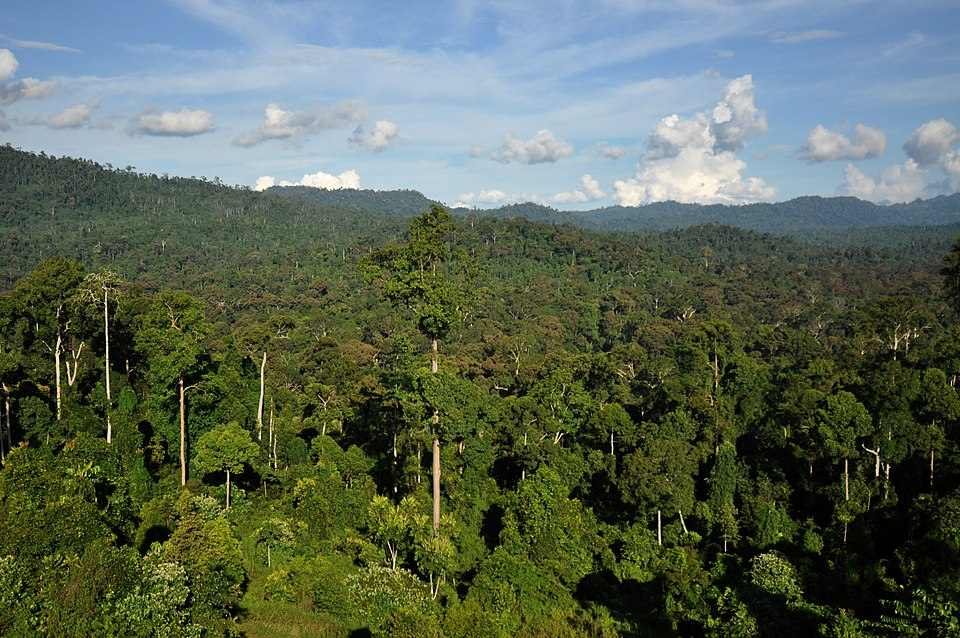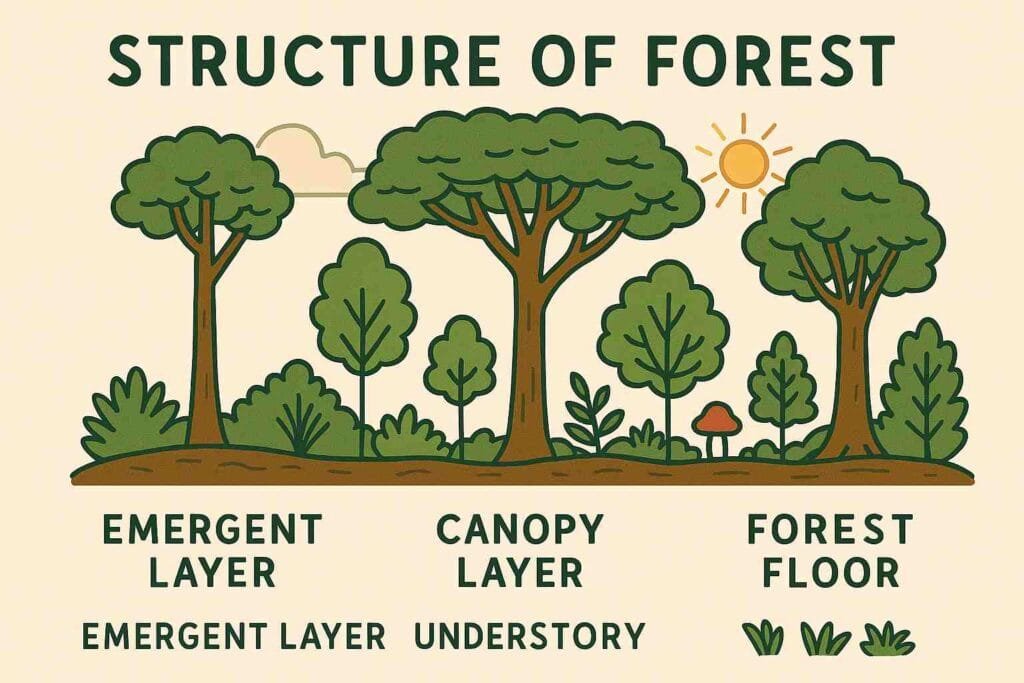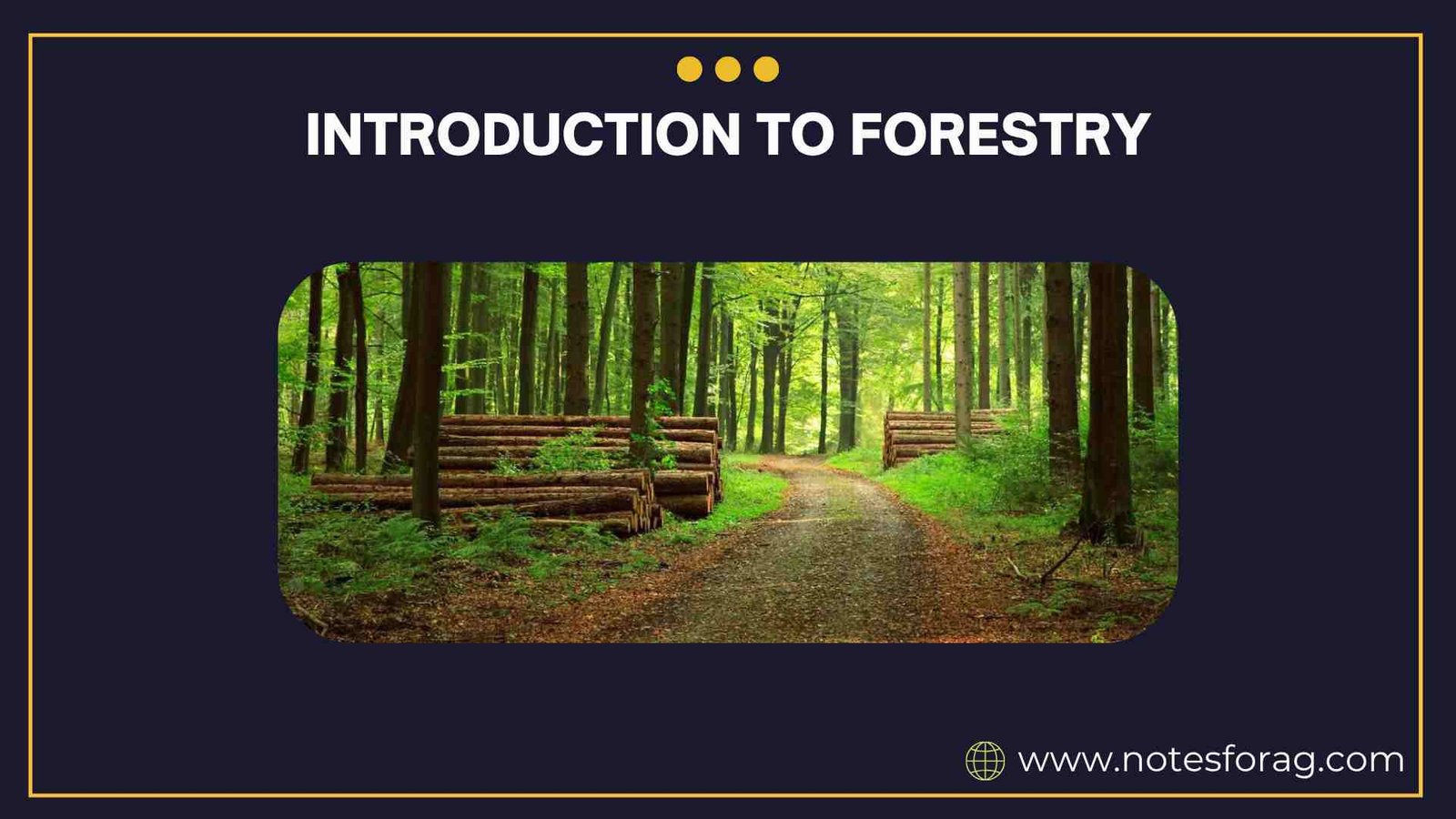1. Introduction to Forestry

Forestry is a vital scientific discipline and practical activity concerned with the management, conservation, and sustainable use of forests and related resources. Forests cover about 31% of the Earth’s land area and are essential for maintaining ecological balance, supporting biodiversity, and providing resources and livelihoods to millions of people worldwide. Understanding forestry involves not only learning about trees and woodlands but also the interactions between forests and the environment, economic activities, and society. Forestry is critical to address global challenges such as climate change, deforestation, and biodiversity loss.
Table of Contents
2. What is Forestry?
Forestry is the science and art of managing forests and related natural resources to meet desired goals and values. It involves the study of forest ecosystems, tree species, soil, wildlife, and human interactions with forests. The main aim of forestry is to maintain forest health and productivity while fulfilling various needs such as timber production, environmental protection, wildlife habitat conservation, and recreational use.
Forestry includes activities like planting, nurturing, harvesting trees, managing pests and diseases, protecting watersheds, and restoring degraded forest lands. The field draws on knowledge from multiple disciplines including biology, ecology, environmental science, economics, and social sciences to develop sustainable forest management practices.
3. Importance of Forestry
Forests are critical to life on Earth, providing numerous ecological, economic, and social benefits. The importance of forestry can be categorized into three major areas:
3.1 Environmental Importance
Forests play a key role in regulating the Earth’s climate by absorbing carbon dioxide during photosynthesis and releasing oxygen, which helps mitigate the effects of global warming. Forests act as carbon sinks, storing more carbon than the atmosphere, thereby reducing greenhouse gas concentrations. Additionally, forests support an incredible diversity of life forms they are home to over 80% of terrestrial species of animals, plants, and fungi. This biodiversity helps maintain ecosystem resilience and stability.
Furthermore, forests protect watersheds by controlling water runoff, preventing soil erosion, and maintaining water quality through natural filtration processes. The forest floor and root systems help stabilize the soil and reduce the risk of floods. By preserving forest cover, forestry helps maintain clean air and water supplies essential for human well-being.
3.2 Economic Importance
Forestry supports many global industries by supplying raw materials such as timber, pulpwood, and non-timber products like resins, medicinal plants, and fruits. Wood and wood-based products are essential for construction, furniture, paper, energy, and various manufacturing sectors. Millions of people worldwide depend on forestry-related jobs in logging, processing, and trade.
Sustainable forest management ensures that forest resources are harvested responsibly without depleting the ecosystem, allowing continuous economic benefits. Additionally, forests contribute to eco-tourism and recreation industries that generate income while promoting conservation.
3.3 Social Importance
Forests have immense social and cultural significance. Many indigenous and local communities rely on forests for their food, medicine, fuel, and traditional practices. Forests provide materials for building homes and tools, as well as spiritual and cultural identity for numerous societies.
Moreover, forests offer recreational opportunities such as hiking, bird watching, and nature retreats that improve human health and quality of life. Forestry also promotes environmental education and community involvement, fostering stewardship and awareness of natural resource conservation.
4. History and Evolution of Forestry
Forestry has evolved significantly from ancient practices to modern scientific management.
4.1 Ancient and Traditional Forestry
In ancient times, forests were primarily used as a source of fuel, construction material, and food. Early humans practiced simple forms of forest management based on traditional knowledge, such as protecting sacred groves or rotating harvesting areas to allow regrowth. These traditional methods aimed at preventing over-exploitation but were often limited by population pressures.
4.2 Development of Scientific Forestry
Scientific forestry emerged in Europe during the 18th and 19th centuries as rapid deforestation caused timber shortages. Foresters began applying systematic principles to monitor forest growth and reproduction. The concept of sustained yield harvesting cutting only what the forest can regenerate became central to forestry.
The establishment of forestry schools and professional institutions promoted research, education, and standardization of forest management practices. This era marked a shift from purely extractive uses to planned and sustainable management.
4.3 Contemporary Forestry
Today’s forestry integrates cutting-edge technology such as remote sensing, GIS (Geographic Information Systems), and computer modeling to monitor and manage forests on large scales. There is a broader focus on ecosystem services, climate change mitigation, biodiversity conservation, and social equity.
Forestry also emphasizes participation of local communities and stakeholders to achieve sustainable outcomes. Policies increasingly incorporate environmental ethics and international cooperation to address global forest issues.
5. Types of Forests
Forests are classified based on climate, species composition, and geographic location. Each forest type has unique characteristics and management needs.
5.1 Tropical Forests

Tropical forests are found near the equator and are characterized by high temperatures and heavy rainfall year-round. These forests have dense canopies with multiple layers and incredible biodiversity, including many endemic species. Tropical rainforests, such as the Amazon and Congo basins, are critical for global carbon storage and oxygen production. They are often threatened by logging, agriculture, and mining.
5.2 Temperate Forests
Temperate forests occur in regions with moderate climates and distinct seasons, including warm summers and cold winters. They consist mainly of deciduous trees that shed their leaves annually or coniferous evergreens. These forests provide important timber resources and habitat for diverse wildlife. Temperate forests are found in parts of North America, Europe, and Asia.
5.3 Boreal Forests
Also known as taiga, boreal forests cover large parts of northern Canada, Russia, and Scandinavia. They are dominated by coniferous trees such as spruce, pine, and fir adapted to long, cold winters and short growing seasons. Boreal forests contain large carbon stocks in both trees and soils and are vital in regulating Earth’s climate.
5.4 Mangrove Forests
Mangrove forests grow along tropical and subtropical coastlines, where saltwater and freshwater mix. These forests protect shorelines from erosion, storm surges, and tsunamis. Mangroves also serve as nurseries for many marine species and support coastal fisheries critical to local economies.
6. Forest Ecology
Forest ecology studies the interactions between organisms and their forest environment, which is fundamental for managing and conserving forests.
6.1 Forest Structure

Forests have a multi-layered structure consisting of the canopy (uppermost layer of tall trees), the understory (smaller trees and shrubs beneath the canopy), the shrub layer, and the forest floor. Each layer provides habitat and resources for different species and plays a role in energy flow and nutrient cycling.
6.2 Biodiversity in Forests
Forests harbor immense biodiversity, supporting plants, animals, fungi, and microorganisms. High biodiversity increases ecosystem resilience by enabling forests to recover from disturbances such as fire, disease, or pests. Biodiversity also enhances ecosystem functions like pollination and decomposition.
6.3 Ecosystem Services
Forests provide vital ecosystem services such as carbon sequestration, water regulation, soil fertility maintenance, and climate moderation. These services sustain life on Earth, support agriculture, and reduce natural disaster risks. Forests also filter air pollutants and help regulate local weather patterns.
7. Forest Management
Effective forest management balances ecological health with economic and social needs.
7.1 Sustainable Forest Management
Sustainable forest management (SFM) ensures that forest resources are used in ways that meet current needs without compromising the ability of future generations to meet theirs. SFM integrates ecological, economic, and social objectives through practices that maintain biodiversity, productivity, and regeneration capacity.
7.2 Silviculture
Silviculture is the branch of forestry that focuses on the cultivation and care of forest trees. It includes practices such as planting, thinning to reduce competition, pruning to improve tree form, and controlled harvesting. Proper silviculture maximizes growth, health, and quality of forests.
7.3 Forest Conservation
Conservation involves protecting forest areas from unsustainable exploitation and degradation. Strategies include establishing protected areas, enforcing laws, reforestation, and restoring damaged ecosystems. Conservation also supports endangered species and ecological processes.
7.4 Forest Certification
Forest certification systems, like the Forest Stewardship Council (FSC), verify that forests are managed sustainably. Certification assures consumers and businesses that wood and paper products come from responsibly managed forests, promoting market incentives for conservation.
8. Challenges in Forestry
Forestry faces multiple challenges that threaten forests and their benefits.
8.1 Deforestation
Deforestation is the large-scale removal of forest cover for agriculture, urban development, or logging. It causes habitat loss, threatens biodiversity, contributes to climate change by releasing stored carbon, and disrupts water cycles.
8.2 Forest Degradation
Forest degradation refers to the reduction in forest quality and productivity due to factors like selective logging, fires, invasive species, and pollution. Degraded forests may no longer provide full ecological services.
8.3 Climate Change
Climate change alters temperature and precipitation patterns, affecting forest growth, species composition, and vulnerability to pests and diseases. Adaptive management is required to maintain forest health under changing conditions.
8.4 Illegal Logging
Illegal logging undermines sustainable management, causes economic losses, and destroys ecosystems. It is driven by weak governance, corruption, and high demand for cheap timber products. Combating illegal logging requires strong legal frameworks and enforcement.
9. Future of Forestry
The future of forestry depends on innovation, collaboration, and sustainable practices.
9.1 Technological Innovations
Emerging technologies such as drones, satellite imagery, remote sensing, and artificial intelligence are revolutionizing forest monitoring and management. These tools improve data accuracy, detect illegal activities early, and optimize resource use.
9.2 Community-Based Forestry
Empowering local and indigenous communities to manage forests enhances sustainability by incorporating traditional knowledge and aligning conservation with local development needs. Community forestry promotes stewardship and social equity.
9.3 Global Cooperation
Forests are a global resource, and their protection requires international cooperation through agreements like the UN’s REDD+ program, aiming to reduce emissions from deforestation and forest degradation. Collaborative efforts help share knowledge, funding, and policy frameworks.
10. Conclusion
Forestry stands at the intersection of ecological care, economic development, and human well-being. As the practice of managing forests evolved from early indigenous use and traditional conservation to modern, science-based forest management it has become a crucial part of how we interact with nature. Today’s forestry practices blend knowledge from biology, environmental science, and technology to sustainably manage forest ecosystems. Tools like GPS mapping, satellite monitoring, and AI-based data analysis allow us to understand forest health better and make faster, smarter decisions.
Sustainable forest management (SFM) remains the core principle of modern forestry. It aims to meet our current needs for forest products while ensuring that forests continue to grow, thrive, and regenerate for future generations. Through silviculture techniques, conservation areas, and global certification programs like the Forest Stewardship Council (FSC), sustainable forestry helps us balance timber production with the protection of biodiversity and forest health. These practices also maintain ecosystem services such as carbon storage, water purification, and climate regulation.
Despite these advancements, forests continue to face major threats. Deforestation due to agriculture, mining, and urban expansion, along with illegal logging, wildfire outbreaks, and the effects of climate change, put forest ecosystems at risk. Combatting these threats calls for strong environmental policies, global cooperation through frameworks like REDD+, and the active involvement of local and indigenous communities. When communities take part in forest decision-making and benefit from forest resources, the forests become more resilient and sustainably managed.
Looking ahead, forestry is shifting toward a smarter, more inclusive future. With cutting-edge technologies and community leadership, we can protect forests while using them wisely. Forestry is not just about trees it is about sustaining life, reducing climate change, restoring ecosystems, and building a greener, more secure planet for future generations.
Frequently Asked Questions (FAQs)
What is sustainable forest management?
Sustainable Forest Management (SFM) is a holistic approach to using, conserving, and restoring forest resources to meet today’s economic, environmental, and social needs without harming the forest’s ability to provide the same benefits in the future. It ensures that forests continue to support biodiversity, provide livelihoods, regulate climate, and offer raw materials for industries, all while remaining healthy and productive for future generations.
How do forests fight climate change?
Forests are powerful natural carbon sinks. They absorb carbon dioxide (CO₂) from the atmosphere during photosynthesis and store it in trees, vegetation, and soil. This helps reduce greenhouse gas levels and slows down global warming. Forests also regulate temperature, influence rainfall patterns, and increase climate resilience by stabilizing local weather and reducing the impact of extreme conditions.
What are the different types of forests?
Forests are broadly categorized into tropical, temperate, boreal (taiga), and mangrove forests. Tropical forests, found near the equator, are rich in biodiversity and have warm, humid climates. Temperate forests grow in moderate climates and have distinct seasons. Boreal forests exist in colder regions and are dominated by conifers. Mangrove forests grow in coastal areas and protect shorelines from erosion while supporting marine life. Each type plays a unique ecological and economic role.
Related Articles

